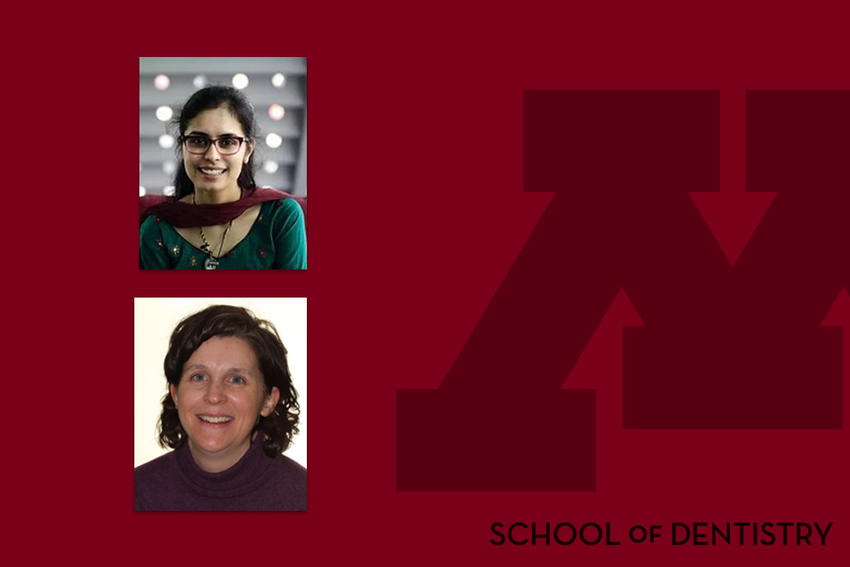Mutreja, Mansky receive OACA grant with Med School's Bradley

A collaborative study involving two School of Dentistry researchers received an Office of Academic Clinical Affairs (OACA) Faculty Research Grant to study methods of using osteoclast exosomes for bone growth.
Isha Mutreja, MSc, PhD, research assistant professor in the Minnesota Dental Research Center for Biomaterials and Biomechanics, partnered with professor and director of the Minnesota Craniofacial Research Training Program Kim Mansky, PhD, and Elizabeth Bradley, PhD, an assistant professor in the Medical School, on Designing an injectable system using osteoclast exosomes for bone regeneration.
Mutreja, a material scientist with a history of training as a biomedical engineer, focuses her research on hard and soft tissue regeneration. She, Mansky and Bradley are seeking to improve on currently-used treatments like bone auto- and allographs in bone transplant procedures. “Availability, donor-site morbidity and graft incompatibility are limitations” to current “gold standards of treatment,” Mutreja explained. The team hopes to build on the promise of stem cell therapy-based approaches, which have worked well in trials but come with ethical constraints and a high cost.
“To overcome these challenges, we tap into the ‘secretome’ of osteoclasts: cells that play an irreplaceable role in bone healing, and combine the secreted ‘exosome’ that has all the necessary cues with a soft gel-like carrier that holds these exosomes in place,” Mutreja explained. “We anticipate that when this exosome-containing gel is applied onto a defect, we will achieve significantly improved bone healing.”
This project, and Mutreja’s collaboration with Mansky, has roots in 2019, when the two explored synthetic nanostructure systems and osteoclasts’ responses. “Finally, in 2021, we were able to perform some initial experiments. We had some exciting pilot data,” she said, “but to get more insight, more in vitro and in vivo studies were required.”
Knowing more data, assistance and excitement were needed to continue this study and prepare to submit a proposal to the National Institutes of Health, Mutreja and her collaborators applied for—and received—an OACA Faculty Research Grant.
The program administered by the Office of Academic Clinical Affairs awards funding to new or expanding interdisciplinary research that has a clinical focus and potential to significantly innovate upon an issue. Mutreja and her collaborators were one of 27 applications in 2021.
“Interprofessional research gives a platform to bring experts from different fields together,” Mutreja reflected. “Everyone is trying to solve the same problem, but approaching it from different angles based on their expertise and interests. Mutreja appreciates the opportunity these grants provide to bring together resources and experts to work together. “Whether the set hypothesis of the project is validated or not, everyone learns, and at the end, that’s what matters.”
Mutreja says she was “shocked” to learn of the win. “I had great confidence in our proposal and the team, but finding out the review committee believed in our proposal was surreal.” She is looking forward to the ways this grant will inform future NIH proposals.
More personally, Mutreja is excited to formalize her collaboration with Mansky and Bradley, who she considers “leading experts in bone biology.
“Throughout the project, I hope to not only do some amazing scientific work with them, but also learn and grow as an independent researcher under their esteemed mentorship.”
More than anything, this collaboration has reminded Mutreja of the importance of every researcher and every facet of expertise in producing excellent scientific results.
“I believe that science progresses when there is a close interaction between experts from different fields,” she said. “In biomedical engineering, clinicians play a vital role in solving challenges. They help material scientists like us to understand the limitations of the platforms we develop that might work great in a lab setting, but never reach a translational potential. I want to create solutions that actually work in clinics.”